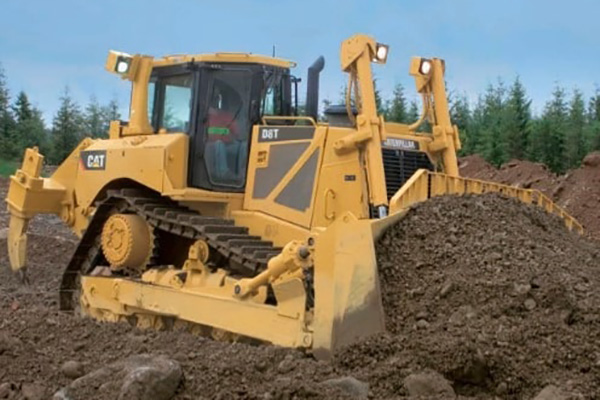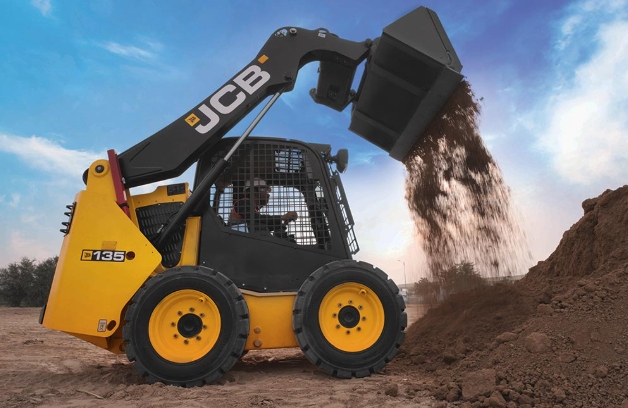Welcome to the world of heavy machinery! If you’re in the construction, mining, or geotechnical industries, you know that the right tools are not just helpful—they’re essential. Earthmoving equipment forms the backbone of any major project, responsible for shaping the land and preparing the ground for whatever comes next. As someone who has manufactured drilling tools for decades, I’m Allen, and I’ve seen firsthand how projects succeed or fail based on the machinery used. This guide is for seasoned professionals like Mark Davis, a procurement officer in the USA, who needs to balance quality, cost, and reliability. We’ll break down the common types of earthmoving equipment, exploring what each machine does, its best applications, and how to choose the perfect one for your job. Let’s dig in.
What Exactly Is Earthmoving Equipment and Why Is It Crucial for Your Project?
At its core, earthmoving equipment refers to a broad category of heavy-duty construction machines designed to, well, move earth. This includes everything from digging foundations and trenches to grading landscapes and hauling materials. These powerful machines are the workhorses of the construction industry, enabling tasks that would be impossible to perform manually. The process of earthmoving is fundamental to nearly all construction projects, from building a skyscraper to laying a simple pipeline. Without these machines, modern infrastructure simply wouldn’t exist as we know it.
The importance of this type of equipment cannot be overstated. Efficient earthmoving directly impacts project timelines and budgets. Choosing the correct machine for a specific task ensures that work is completed safely, quickly, and cost-effectively. For example, using an oversized excavator for a small trench can lead to unnecessary fuel consumption and site damage, while using an undersized loader can create bottlenecks in your material handling workflow. Understanding the different types of earthmoving equipment is the first step toward optimizing your operations and ensuring your projects run smoothly from the ground up. These heavy machines are an investment, and making an informed decision is paramount.
How Do Excavators Revolutionize Digging and Demolition?
When you picture heavy construction machinery, the excavator is likely one of the first things that comes to mind. An excavator consists of a cab, an undercarriage with tracks or wheels, and a powerful, two-part articulated arm ending in a bucket. The entire upper structure can rotate 360 degrees, giving it an incredible range of motion without needing to reposition its base. This design, powered by a sophisticated hydraulic system, makes it one of the most versatile pieces of equipment on any job site. Its primary function is, of course, to excavate, but its capabilities extend far beyond that.
The excavator is a master of many trades. It is primarily used for digging foundations, trenches, and holes with precision and power. The variety of bucket sizes and types available allows it to adapt to different soil conditions and project requirements. Beyond digging, excavators are powerhouses in demolition, capable of tearing down structures and processing the resulting rubble. They are also essential for material handling, lifting heavy objects, and even landscaping. For more challenging ground conditions, an excavator’s arm can be fitted with specialized tools. In my field, we often see them paired with hydraulic hammers or augers. For rock breaking, they are frequently equipped with tools like high-performance Rock Drilling Bits to tackle the toughest geological formations. This ability to switch tools makes the hydraulic excavator a true multi-tool for any major excavation task.

What Makes a Wheel Loader an Indispensable Asset on a Job Site?
A wheel loader is another cornerstone of material handling on a construction site. This machine is easily identified by its large, front-mounted bucket supported by two arms, and, as the name suggests, its four rugged wheels. The primary purpose of a wheel loader is to scoop, lift, and transport loose materials such as soil, sand, gravel, and debris from one place to another. Its most common task is loading these materials into a dump truck to be hauled away, a process that keeps the entire jobsite flowing efficiently.
The key advantage of a wheel loader is its mobility. Unlike tracked machines, its wheels allow it to move quickly across a site, especially on firm, stable surfaces like asphalt or compacted soil. This makes the loader incredibly efficient for tasks that require frequent repositioning. The articulated frame of most wheel loaders allows them to pivot in the middle, giving them a surprisingly tight turning radius for their size. This combination of speed and maneuverability means a single loader can service multiple areas of a large project, from stockpiles to excavation pits. This versatility makes the wheel loader a must-have for a wide range of applications, from construction and mining to agriculture and waste management.
When Should You Choose a Backhoe Loader for Maximum Versatility?
Imagine combining a loader and an excavator into a single, compact machine. That’s essentially what a backhoe loader is. This ingenious piece of construction equipment features a loader-style bucket on the front and a digging bucket on a jointed arm—the backhoe—on the back. Typically built on a tractor chassis, the backhoe loader is one of the most versatile machines you can have on a job site, especially for smaller-scale projects.
The dual-functionality of the backhoe is its greatest strength. The front loader can be used for moving materials, backfilling, and light grading, while the rear backhoe arm is perfect for digging a trench, excavating small foundations, or uprooting tree stumps. This eliminates the need for two separate machines, saving on transportation costs and space. A backhoe loader is ideal for projects that require a mix of digging and loading, such as utility work, residential construction, and landscaping. While it may not have the sheer power of a large excavator or the massive capacity of a dedicated wheel loader, its jack-of-all-trades nature makes it an incredibly valuable and cost-effective asset. They are truly one of the most versatile pieces of equipment in the earthmoving world.
Are Dozers the Unsung Heroes of Grading and Clearing?
While excavators do the digging, the bulldozer, often simply called a dozer, does the pushing. This powerful tracked machine is defined by its large, heavy metal plate, known as a blade, mounted on its front. The primary function of a dozer is used for pushing massive quantities of soil, sand, and other materials. This makes it indispensable for a wide range of tasks, from clearing and grading land to creating roads and maintaining stockpiles. The tracks provide excellent traction and distribute the machine’s immense weight, allowing it to operate effectively on soft or uneven terrain.
The dozer is more than just a brute-force pusher. Its blade can be angled and tilted to perform rough or fine grading, shaping the land to precise specifications. Some dozers are equipped with a ripper, a claw-like device on the rear, which is used to break up hard-packed soil, rock, or pavement, preparing the surface for excavation or further grading. From clearing forests for new developments to shaping the gentle slopes of a golf course, the bulldozer is a fundamental tool for shaping the earth. Its ability to move vast amounts of material and create a level foundation makes it a true hero of heavy construction.
Why is a Skid Steer Loader Perfect for Tight Spaces?
In the world of earthmoving equipment, bigger isn’t always better. The skid steer loader is a testament to this, packing incredible power and versatility into a machine with a very compact size. Its defining feature is its unique steering mechanism; the wheels on each side are locked in synchronization, and turning is achieved by “skidding,” or causing one set of wheels to turn faster than the other. This allows the skid steer to turn on a dime, making it exceptionally maneuverable.
This agility is why the skid steer loader excels in tight spaces where larger machines simply can’t operate. It’s the go-to loader for interior demolition work, residential landscaping, and navigating cluttered construction sites. But its true value lies in its adaptability. The front lifting arms of a skid steer can be fitted with a huge variety of attachments, from a standard bucket to forks, augers, hammers, and trenchers. This transforms the skid steer loader from a simple loader into a multi-purpose tool carrier. This adaptability, enabled by robust components like anchor Couplings that ensure secure connections, makes it an incredibly cost-effective investment for contractors who need one machine to do the job of many.
What is the Role of a Motor Grader in Achieving a Perfect Surface?
When precision is key, the motor grader takes center stage. Also known as a road grader, this specialized piece of earthmoving equipment is designed for one primary purpose: fine grading. Its most distinctive feature is a very long blade located between the front and rear axles. This blade can be adjusted to various angles to create a flat, smooth surface with an exceptional degree of accuracy. Unlike a dozer, which is used for rough grading, a motor grader is a finishing tool.
You will most commonly find a motor grader on road construction projects. It is used to create a precise, level base for pouring concrete or laying asphalt. It’s also used to build and maintain gravel roads, create drainage ditches, and produce finished slopes on embankments. The operator of a motor grader is often a highly skilled professional, as achieving the perfect grade requires a delicate touch and a keen eye. For any project that demands a perfectly flat and smooth surface, the motor grader is not just the best tool for the job—it’s the only tool.
How Do Dump Trucks Keep Your Material Handling Efficient?
While not strictly an earthmoving machine in the sense of digging or grading, the dump truck is a vital part of the earthmoving ecosystem. These heavy-duty vehicles are the logistical backbone of any project, responsible for transporting and depositing loose materials. A dump truck is equipped with an open-box bed at the rear, which is hinged at the back and can be lifted by hydraulic rams to dump its contents onto the ground.
The workflow is simple but critical: an excavator or loader fills the dump truck with soil, rock, sand, or demolition debris. The truck then hauls the material to another part of the job site or transports it off-site for disposal or processing. This continuous cycle of loading, hauling, and dumping is what keeps a project moving forward. Without an efficient fleet of dump trucks, excavated material would pile up, halting all progress. They come in various sizes, from smaller models for tight urban projects to massive, off-road haul trucks used in large-scale mining operations. They are the essential link that connects the digging with the final placement of materials.
What’s the Difference Between a Wheel Loader and a Track Loader?
At first glance, a wheel loader and a track loader look very similar. They are both a type of loader with a front-mounted bucket, designed to move materials. The fundamental difference, however, lies in their undercarriage. A wheel loader runs on wheels, while a track loader moves on a set of continuous tracks, much like a bulldozer. This single design choice creates significant differences in their performance and ideal applications.
A wheel loader is built for speed and mobility on firm ground. Its wheels allow it to travel quickly across a job site, making it perfect for loading trucks from a stockpile on a paved or compacted surface. A track loader, on the other hand, uses tracks instead of wheels. This gives it superior traction and lower ground pressure, making it the ideal choice for working on soft, muddy, sandy, or uneven terrain. The tracks distribute the machine’s weight over a larger area, preventing it from sinking and providing stability in challenging conditions. While a track loader is slower than a wheel loader, its ability to navigate rough terrain makes it indispensable for land clearing and initial site preparation.
How Do You Select the Right Earthmoving Equipment for Your Needs?
Choosing the right types of earthmoving equipment is a critical decision that can significantly impact your project’s success. As a procurement officer, Mark, I know you face this challenge daily. You have to balance performance, cost, and long-term reliability. The key is to start by analyzing the specific demands of your construction jobs. Consider the scale of the project, the type of materials you’ll be handling (materials like soil, rock, or debris), and the conditions of the job site, such as the terrain and available space.
For large-scale excavation in open areas, a powerful hydraulic excavator and a fleet of dump trucks are a must. For a project with varied tasks in a confined space, a versatile backhoe loader or a skid steer loader with multiple attachments might be a more cost-effective choice. When you need to create a perfectly flat surface for a road, only a motor grader will do.
Beyond the machine itself, remember the importance of the tools and components that support it. The reliability of your heavy machinery is directly linked to the quality of its parts, from the hydraulic system to the ground-engaging tools. As a factory owner, I emphasize this to all my clients. Choosing a partner for your needs, whether it’s for a Self-drilling Hollow Anchor or a simple washer, is just as important as selecting the right earth moving equipment. You need a supplier who understands your pain points—the need for clear communication, reliable logistics, and certified quality. A good supplier doesn’t just sell you a product; they provide a solution that helps you avoid delays and complete your projects with confidence. This is especially true when dealing with ground support materials like the Split rock friction anchor, where reliability is paramount for safety.
Key Takeaways to Remember:
- Excavators: Best for digging, trenching, and demolition, offering 360-degree rotation and great versatility with different attachments.
- Wheel Loaders: Ideal for loading materials like gravel and sand into trucks on firm surfaces, valued for their speed and mobility.
- Backhoe Loaders: A two-in-one machine with a loader in the front and a backhoe in the back, perfect for small to medium-sized projects requiring both digging and loading.
- Dozers (Bulldozers): The go-to machine for pushing massive amounts of material, clearing land, and performing rough grading.
- Skid Steer Loaders: Unmatched in tight spaces due to their compact size and maneuverability. Highly versatile with a wide range of available attachments.
- Motor Graders: A specialized tool used for creating a precise, flat surface, essential for road construction and fine grading.
- Track vs. Wheel Loaders: Choose a wheel loader for speed on stable ground and a track loader for superior traction on soft or uneven terrain.
- Selection is Key: Always match the equipment to the specific needs of your job site, considering terrain, space, and the tasks required. Your choice directly impacts efficiency and profitability.
Post time: Jun-23-2025
















